Starting seedlings–whether during spring or any time of year–is exciting. Those little seedlings hold the possibility of a productive garden bursting with fresh vegetables, tomatoes, or maybe a flower garden. But it’s easy to get worried when seedlings turn yellow. So what causes it, and how can you fix it?
The most common reasons seedlings turn yellow are root damage from wet soil &/or nitrogen deficiency. Yellowing in seedlings & plants–called chlorosis–can also be caused by other factors, such as damaged roots, compacted soil, incorrect soil pH, other nutrient deficiencies, or pests & disease.
While it’s troubling when seedlings & plants turn yellow, there are a couple common causes, along with a handful of less-typical causes. Observation of the specific symptoms & condition of the plant & its soil can often clue you in on the most likely cause–and steer you toward the appropriate fix.
Why do seedlings turn yellow?
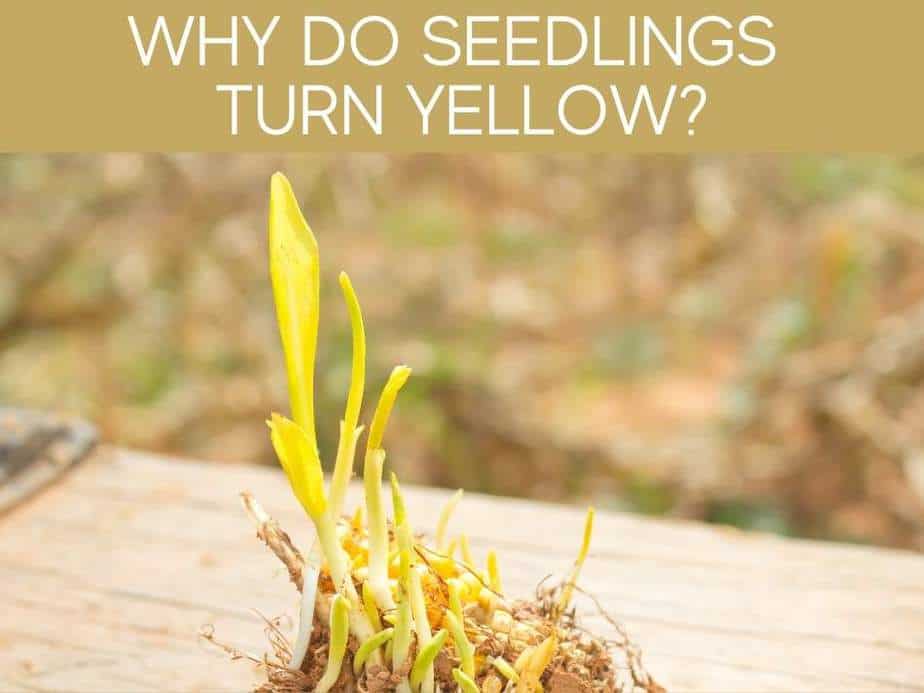
When seedlings turn yellow–whether it’s your cherished tomato seedlings, or any plant–yellowing leaves is called chlorosis.
Chlorosis is a general term–kind of a catch-all word, that simply means the plant is yellowed abnormally.
Chlorosis is a symptom of a lack of chlorophyll, the pigment that plants use to capture & use sunlight to turn water & air into carbohydrates.
So, what causes chlorosis?
Chlorosis, or yellow leaves, can be caused by a number of things:
- poor soil drainage (i.e., soil too wet)
- damaged roots (which can be caused by soil being too wet)
- compacted roots
- too high or too low soil pH
- nutrient deficiencies
- pests & disease
Yellow seedlings caused by nutrient deficiency
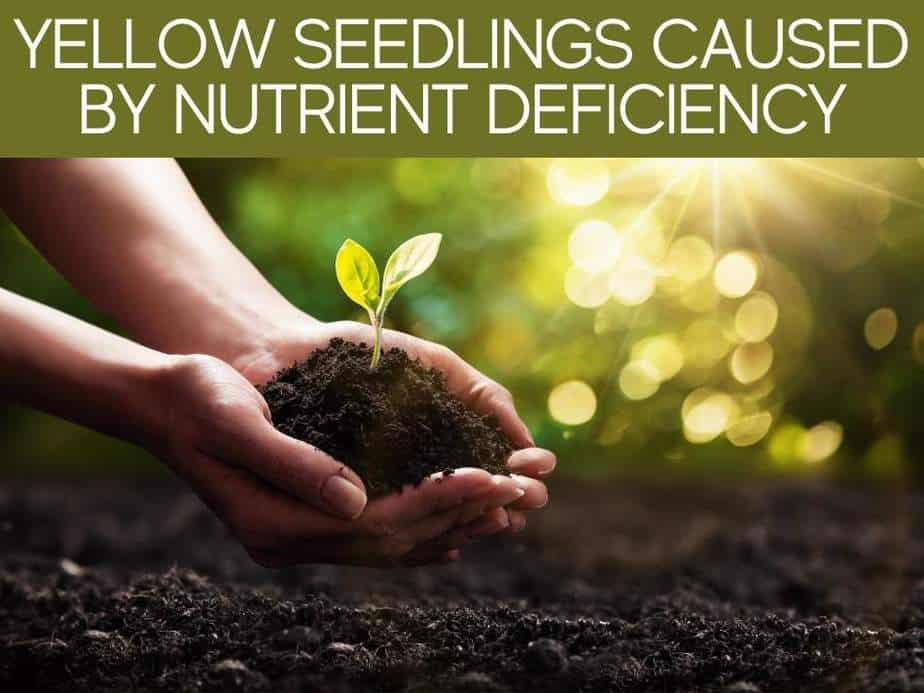
Soil pH that’s too high or too low can prevent nutrients from being available to plants.
For example, nitrogen deficiency commonly causes yellow seedlings & plants.
However, if your soil has adequate nitrogen, but your soil pH is too low (in alkaline soils) or too high (like in a bog), then that nitrogen won’t be available for the plant to use.
Another common nutrient deficiency that causes chlorosis is lack of iron.
Likewise, lack of manganese or zinc can cause chlorosis.
Here’s how to tell which nutrient is causing the yellowing leaves:
- Iron deficiency: Yellowing young leaves, working inward to older leaves.
- Nitrogen, manganese, or zinc deficiency: Yellowing on older or inner leaves first, spreading out to outer or younger leaves.
The most reliable way to determine the cause is often with a soil test.
University labs and county extension offices are often the best places for soil testing.
Yellow seedlings caused by too much water
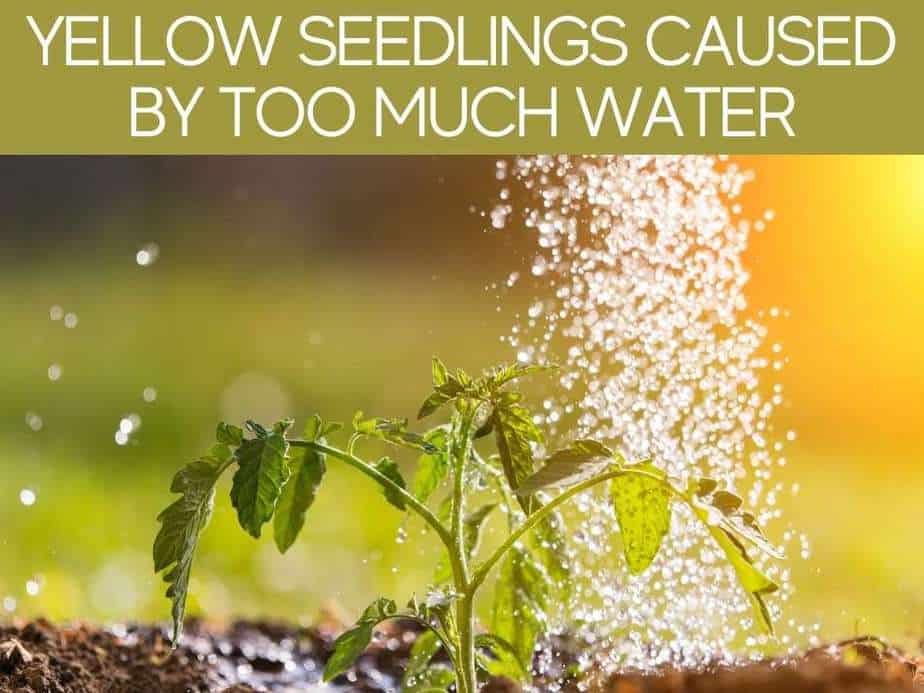
Another common cause of yellow seedlings is too much water.
However, the key here is to understand that too much water actually causes root damage.
So, if the roots are damaged, they can’t function properly and take up necessary nutrients.
The result is that the seedling or plant turns yellow.
A general rule of thumb is that soil should be moist but not soggy.
Remember: a plant can literally drown if the soil is too wet (exceptions are plants that live in aquatic environments).
So, if your soil is soggy or mushy, plant roots won’t be able to get enough oxygen, and could be damaged–turning your plant yellow.
Seedlings yellow and not growing
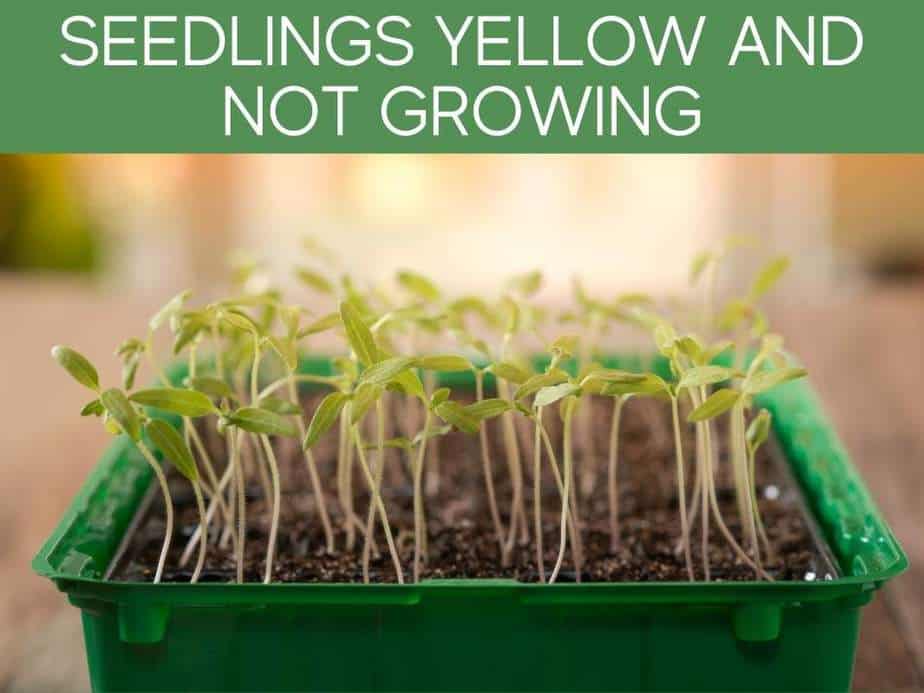
OK, so you plant seeds, then wait a few days or a week before the seedlings peek out of the soil.
You’re excited! Those seedlings are the start of your garden & this year’s crop!
But when those little seedlings turn yellow or stop growing, it’s frustrating.
However, there are some common causes.
Most commonly, yellow seedlings that don’t grow are caused by a nitrogen deficiency.
However, there are other causes for stunted growth–most involve a nutrient deficiency.
Less commonly, other causes are disease or pests.
To complicate things further, environmental factors can cause stunted growth:
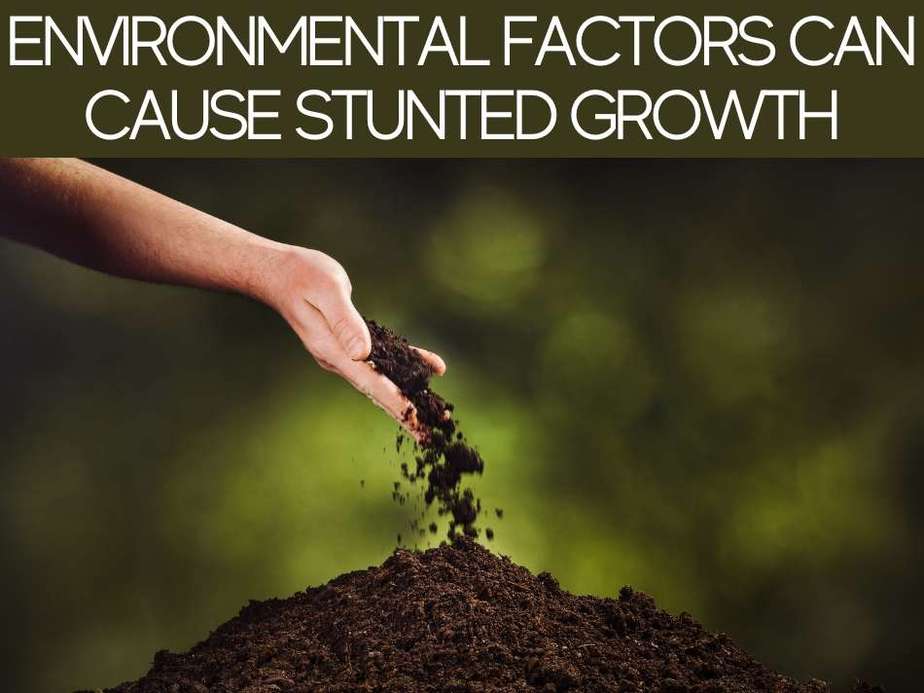
- soil temperature too hot or cold
- soil too wet
- seeds planted too deep or too shallow
- soil compaction
Soil temperature too hot or too cold, and seed depth problems
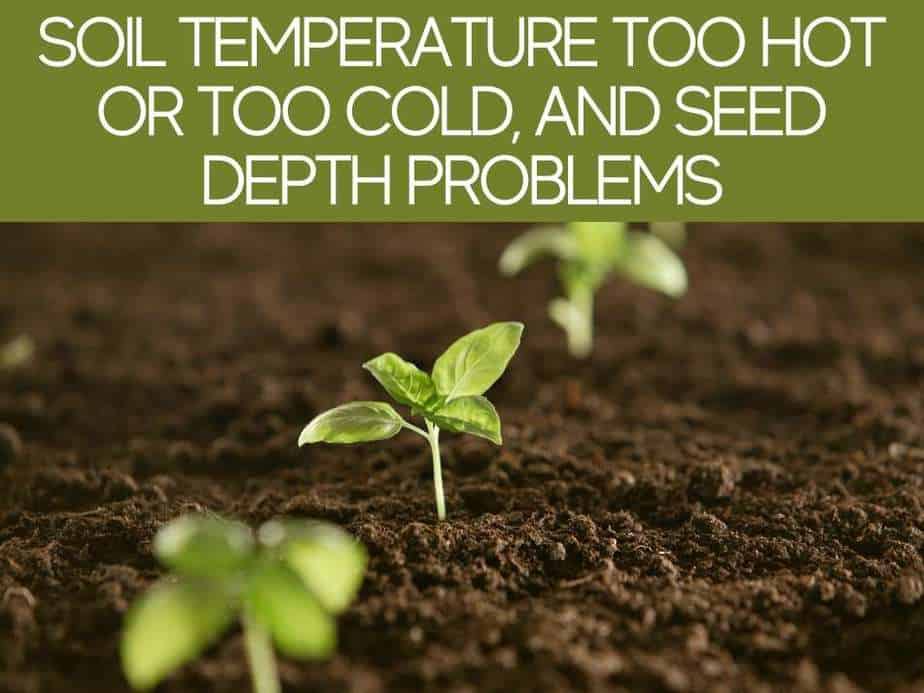
If soil temperature is too hot or too cold. Most seeds as a soil temperature of about 65° -75° F. Generally, the warmer the temperature, the faster the seeds germinate.
Note that even if the air is hot, the ground can still be cold.
If you’re growing seeds in seed trays, you might want to use a seedling heat mat to ensure your seedlings get the right amount of warmth.
Next, another potential problem is that your seeds might have gotten too wet. Remember: soil should be moist but not soggy.
Finally, improper seed depth can cause plant problems.
If you plant too deep, germinating seeds have a hard time reaching the surface or the light can’t reach the seeds.
Planting seeds too shallowly in soil can cause seeds to dry out, preventing germination.
Most seed packets will tell you how deeply the plant variety’s seeds should be planted.
When in doubt–for example, if you have heirloom seeds or wildflower seeds, a rule of thumb is to plant seeds with about 1/4″ of soil, or twice the seed’s diameter.
Seedlings bottom leaves turning yellow
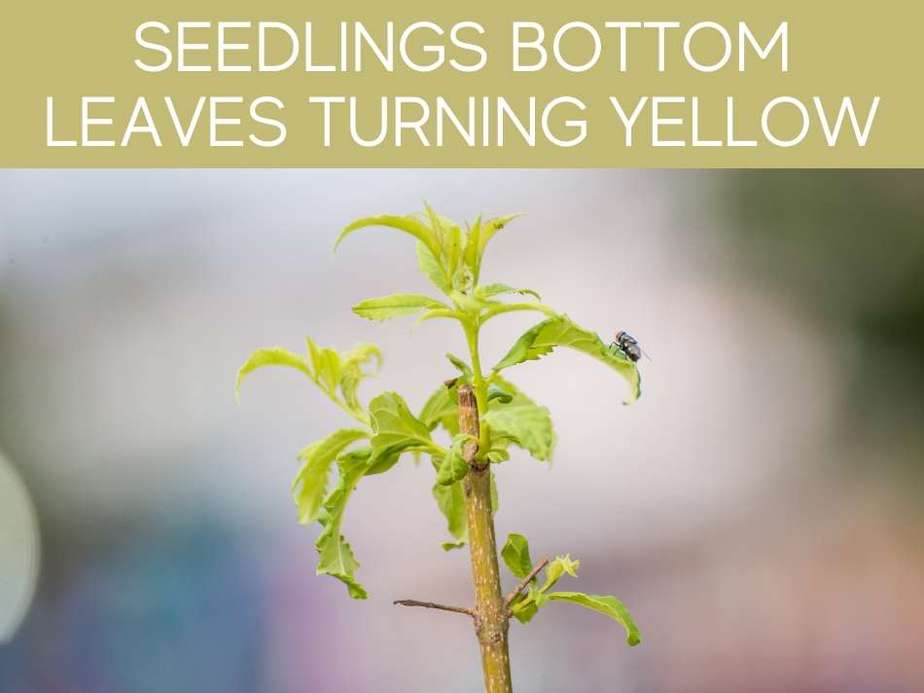
Did you notice yellow leaves in your tomato plants?
The yellowing of tomato leaves can be caused by a variety of factors:
- nutrient deficiency
- pests
- disease
- environmental factors (temperature, soil conditions, moisture)
But probably the most common cause of bottom leaves turning yellow is a nitrogen deficiency.
Probably the second most common cause of yellow leaves is soil that’s too wet, and has resulted in root damage.
Tomato seedlings yellow cotyledons
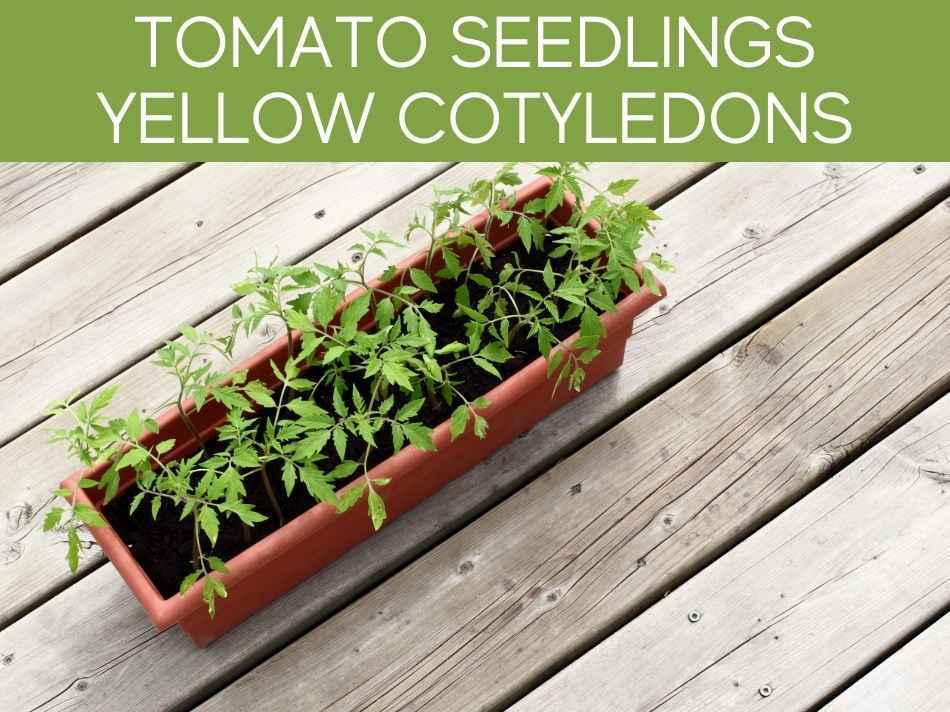
The first thing to determine is which leaf of your plant has become yellow.
When the plants emerge from the soil, they form two initial leaves called cotyledons.
Cotyledons are the leaves that emerge from the seed itself–they’re not true leaves.
Once the plant is established, it will start to produce leaves in different forms that are characteristic of its species.
Cotyledons are designed for the plant to start early in life.
After the plant grows its first true leaves, cotyledons are no longer needed.
At that point, cotyledons often turn yellow and eventually fall.
If the cotyledons are the only yellow seedling leaves, your plants are completely healthy.
Since we’re talking about seedlings, most people are curious about transplanting, and how & when to do it.
We’ve got you covered: Check out our complete guide on when to transplant seedlings from a seed tray.
Other causes for tomato seedlings turning yellow
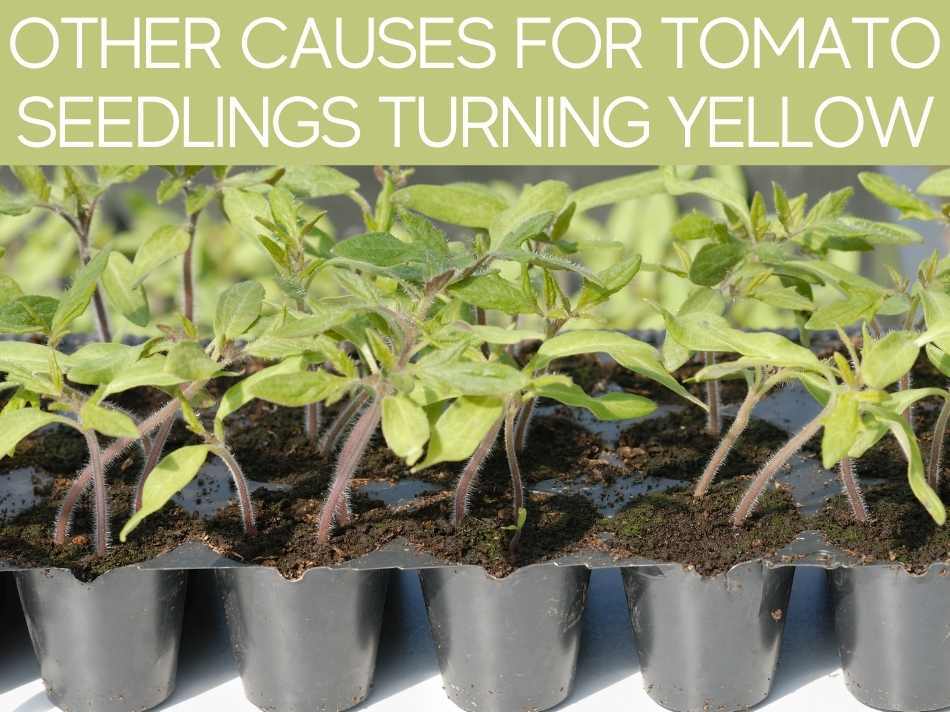
In other cases–especially if the tomato plant is a bit more established–yellow leaves can have more troubling causes: fungal diseases.
Specifically, fusarium & verticillium wilt–both of which are caused by fungus in the soil–can cause yellow tomato leaves.
Fusarium typically causes yellowing on one side of the plant or leaf, beginning on the older, bottom leaves. Growth can also be stunted.
Keep in mind though, that both yellowing leaves and stunted growth are most commonly caused by overwatering and/or insufficient nitrogen.
Overwatering can damage roots, which prevents the tomato plant from absorbing enough oxygen (i.e., drowning the plant) or nutrients.
Likewise, soil pH that’s too low or too high will prevent nutrients in soil from being available to the plant.
Soil for tomatoes is a related subject.
Fortunately, we’ve got you covered: Check out the complete article on what type of soil is best for tomatoes.
Either way–with root damage from overwatering, or incorrect soil pH–the result is your tomato plant turns yellow.
In the simplest case–with overwatering–you just need to back off a bit on the amount of water you’re providing.
Let the soil dry out a bit between waterings. This has the advantage of stimulating deeper root growth.
And remember: soil should be moist but not soggy.
If you’re not sure how much light tomatoes need, you should check out our complete article on how much sunlight tomato seedlings need.
Wrapping up
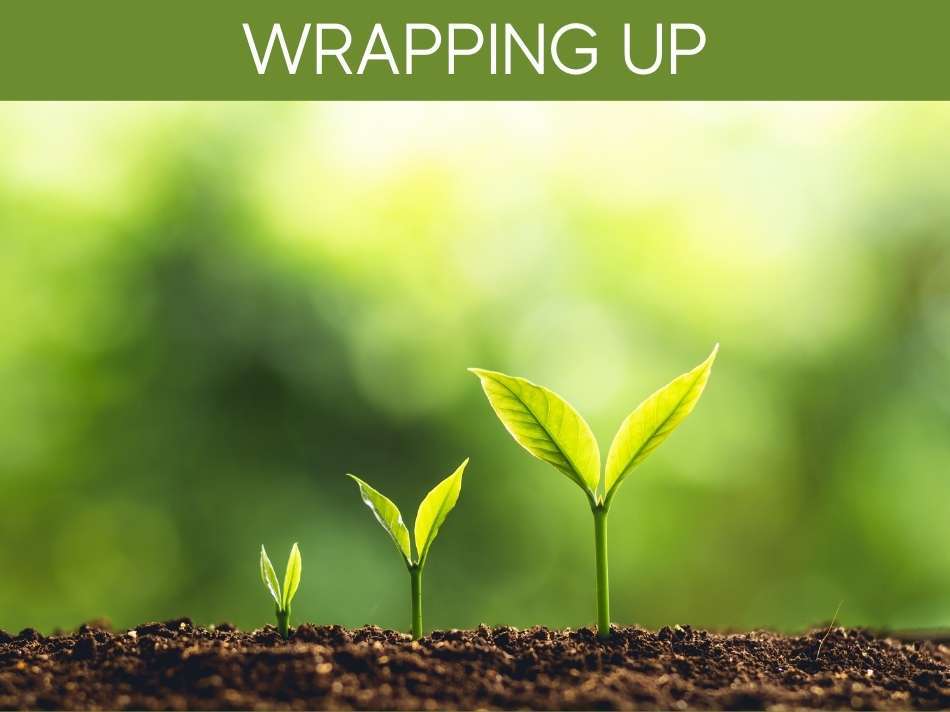
Yellowing leaves are an important clue to plant health.
Basically, you’ve got a clue that something’s wrong with the plant, and your job is to figure out what’s wrong, then fix it.
Knowing the most common causes–overwatering & nitrogen deficiency–can help you correct the problem before it’s too late.
Less common causes are sometimes harder to determine, but every cause has a solution.
Often a soil test by a reputable lab will tell you exactly what the problem is and how to fix it.

